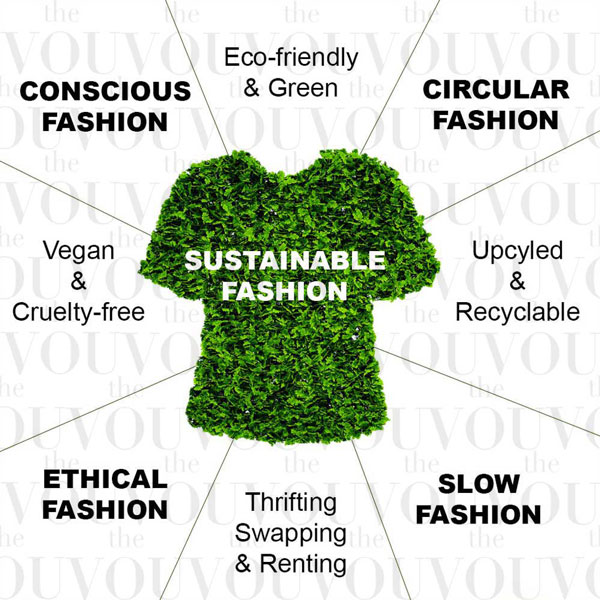
By Audrey Friesen
Choosing sustainable fashion over fast fashion is a small but meaningful contribution toward the fight for climate security. Sustainable fashion aims to achieve a carbon-neutral fashion industry built on ecological integrity and equality. Slow fashion – made-to-order clothing – reduces waste and overproduction.
Fast Fashion – coined in the 1990s – explodes consumerism by overproducing cheap clothing. Using poorly-made garments allows retailers to perpetuate a cycle of waste. The EPA reports that Americans generate more than 16 million tons of textile waste per year. Roughly 700,000 tons are sent overseas, and 2.5 million are recycled. Three million tons are incinerated releasing air pollutants like carbon dioxide. That leaves 10 million tons sent to landfills per year.
A large amount of this clothing waste ends up in the Great Pacific Garbage Patch. The Great Pacific Garbage Patch covers an estimated surface area of 1.6 million square kilometers, an area twice the size of Texas or three times the size of France.
Fast Fashion uses synthetic materials like polyester and nylon which are sourced from petroleum – a fossil fuel. Synthetic materials use an estimated 342 million barrels of oil per year. Extracting petroleum is detrimental to the environment and continues to damage our ecosystem. Over time, plastic products shed smaller particles through natural weathering, creating microplastics, defined as five millimeters in size or smaller. Around 35 percent of microplastics in the oceans are believed to originate from the washing of synthetic textiles,” says Javier Mateo-Sagasta, the water quality coordinator with the International Water Management Institute. There is no existing technology that can remove these microplastics from the ecosystem.
Toxic contaminants accumulate on the surface of plastic materials as a result of prolonged exposure to seawater. When marine organisms ingest plastic debris, these contaminants enter their digestive systems, and over time accumulate in the food web.
Sustainable clothing starts at the source and continues through to the end of use. While many textiles used in fast fashion are sourced from fossil fuels, sustainable fashion uses eco-friendly materials. Popular materials include organic cotton, bamboo, hemp, wool, and even recycled polyester. Unlike petroleum-based materials, eco-friendly materials decompose naturally. Shopping sustainably will benefit not only the environment but can also be an affordable alternative. Mass-produced cheap clothing will fall apart after one season of use; whereas, sustainable clothing is meant to last. The initial purchase of fast fashion is cheaper but compounds to much more than a high-quality sustainable alternative.
Roughly 15% of used clothing in the United States gets reused or recycled. The other 85% is either incinerated or sent to landfills. Consider buying items second-hand. Retailers like Goodwill, Savers, and Salvation Army are all affordable alternatives to buying new. Antique stores and vintage resellers curate their collections. Providing unique pre-loved items for the consumer.


